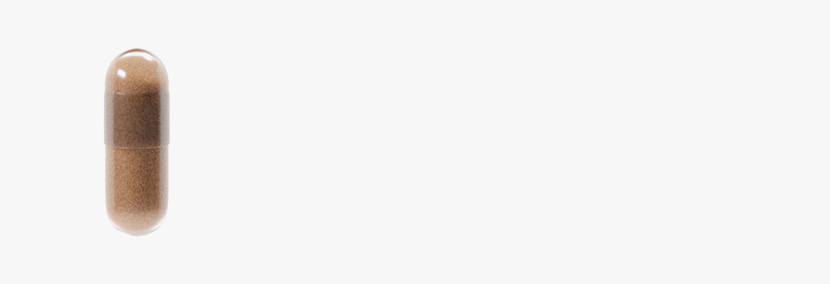EMLA cream Uncategorized
EMLA Cream Composition – What’s In This Anaesthetic?
Jul 31, 2025
Did you know that lidocaine and prilocaine, two ingredients with similar chemical structures, actually work best when paired together? Lidocaine kicks in quickly to numb the area, while prilocaine sticks around a bit longer, extending the pain relief. This clever combination is what makes EMLA cream such a trusted option for numbing the skin before procedures.
EMLA cream blends 2.5% lidocaine and 2.5% prilocaine into a smooth, fast-absorbing cream. It’s designed for use on intact skin and mucous membranes, offering needle-free relief with surprisingly deep numbing effects. And because it’s applied topically, it gives patients and professionals more control over where and how it works.
In this article, we’ll break down what’s actually in EMLA cream, how each ingredient works to block pain signals, and what you should know to use it safely and effectively, whether in a clinic or at home.
Key Takeaways
- EMLA cream combines 2.5% lidocaine and 2.5% prilocaine, creating a balanced 5% topical anesthetic that blocks pain signals by targeting sodium channels in nerve cells.
- Its oil-in-water emulsion base allows for deep skin penetration, ensuring a controlled and predictable numbing effect within 30 to 60 minutes of application.
- Excipients play a crucial role by stabilizing the active ingredients, improving skin absorption, and reducing the risk of irritation or microbial contamination.
- Specifically designed for intact skin, EMLA is widely used in procedures such as tattoos, vaccinations, cosmetic laser treatments, and blood draws.
- The synergy between lidocaine’s rapid onset and prilocaine’s longer duration makes it suitable for both medical and aesthetic applications.
- While safe for most users, proper application, dosage, and timing are essential for achieving optimal results and minimizing side effects.
About: Trusted by over 2,000+ global clients since 2014, Maylips has become a leading supplier of cosmetic, skincare, and orthopedic products for medical and aesthetic professionals. Maylips offers a wide range of authentic brand-name products at competitive wholesale prices, sourced from around the world. If you’re looking to buy EMLA Cream online, contact our sales team for guidance.
Active Ingredients in EMLA Cream: Lidocaine and Prilocaine
At the heart of EMLA cream are two powerful local anesthetics: lidocaine and prilocaine. Each gram contains 2.5% lidocaine and 2.5% prilocaine, creating a balanced 5% topical anesthetic that’s trusted in both medical and cosmetic settings. These active ingredients work by blocking sodium channels in nerve endings, effectively numbing the skin and reducing discomfort during procedures.


What sets this combination apart is its synergy. Lidocaine acts fast, kicking in quickly to dull surface pain, while prilocaine provides longer-lasting relief. This makes EMLA a go-to option for a variety of minor procedures, from blood draws and laser treatments to skin-deep applications like EMLA numbing cream for tattoos. Understanding how both agents function helps users apply the cream properly and safely for optimal results.
How the EMLA Cream Base Enhances Skin Penetration
The oil-in-water emulsion base in EMLA isn’t just a filler—it’s a key player in the cream’s effectiveness. This unique formulation allows the anesthetics to penetrate the outer skin barrier (the stratum corneum) and reach the nerves beneath, where pain signals begin. It’s the base that ensures a deep and controlled numbing effect, without needles.
The emulsion supports:
- A stable environment so lidocaine and prilocaine remain active.
- Slight hydration of the skin, improving permeability.
- A gradual, sustained release, giving a predictable onset within 30 to 60 minutes.
This design makes EMLA reliable in clinical routines and cosmetic practices, where timing and comfort matter.
Role of Excipients in EMLA’s Safety and Efficacy
Beyond the main anesthetics, excipients in EMLA play several behind-the-scenes roles that ensure the cream works smoothly and stays skin-friendly. Though inactive, these ingredients are essential for safety, shelf life, and skin absorption.
They:
- Stabilize lidocaine and prilocaine to avoid separation or degradation.
- Enhance absorption by forming a semi-occlusive film on the skin.
- Prevent microbial growth, keeping the formulation hygienic.
- Reduce skin irritation, making it safer for repeated use.
Together, the excipients make EMLA not only effective but also well-tolerated, even on sensitive skin when applied correctly.
Why EMLA’s Composition Makes It Effective on Intact Skin
One of the standout qualities of EMLA cream is its formulation specifically for intact skin (areas without wounds, cuts, or abrasions). This precision targeting minimizes risks while delivering deep numbing where needed most.


The formulation works because of:
- The balanced anesthetic ratio for both quick onset and extended relief.
- A specialized cream base that promotes skin penetration without overexposure.
- Skin-safe excipients that reduce the chance of redness or allergic reactions.
Thanks to these design features, EMLA is widely used in vaccinations, blood sampling, microneedling, and other non-invasive treatments where numbing is helpful but skin integrity must be preserved.
Conclusion
The thoughtful composition of EMLA cream explains why it remains a trusted topical anesthetic across medical and cosmetic fields. Its dual-active formula of lidocaine and prilocaine ensures a fast and lasting numbing effect, while the oil-in-water emulsion base enhances absorption without overwhelming the skin.
By supporting the formulation with effective excipients, EMLA offers a well-rounded approach to pain relief, particularly for procedures on intact skin. Whether preparing for a tattoo, an injection, or a minor cosmetic treatment, EMLA continues to stand out as a safe, predictable, and convenient option for temporary numbness.
FAQs
1. What are the active ingredients in EMLA cream?
EMLA contains 2.5% lidocaine and 2.5% prilocaine, which work together to temporarily numb intact skin before procedures.
2. How does EMLA cream work?
Lidocaine and prilocaine penetrate the skin to block nerve signals, creating localized numbness and reducing discomfort during minor procedures.
3. Can EMLA cream be used on broken skin?
No, EMLA is formulated for use only on healthy, intact skin to prevent excessive absorption and reduce the risk of irritation.
4. How long does EMLA cream take to work?
The numbing effect typically starts within 30 to 60 minutes after application, depending on skin thickness and procedure type.
5. Are there any side effects of EMLA cream?
You may experience mild, temporary side effects like redness, tingling, or whitening of the skin at the application site.
6. Is EMLA cream safe for children?
Yes, EMLA is safe when used according to age-based dosing guidelines for pediatric procedures like vaccinations or blood draws.
7. How should EMLA cream be stored?
Store EMLA at room temperature, away from heat and light. Keep the tube tightly sealed when not in use.
Talk with our sales representative.
Book a Meeting
References
Abuelkheir M, Alsourani D, Al-Eyadhy A, Temsah MH, Meo SA, Alzamil F. EMLA® cream: A pain-relieving strategy for childhood vaccination. Journal of International Medical Research. 2014;42(2):329-336. doi:10.1177/0300060513509473
Li L, Cai B, Li H, Wei J, Tao L, Ma P. Dermal effects and pharmacokinetic evaluation of the lidocaine/prilocaine cream in healthy Chinese volunteers. BMC Pharmacology and Toxicology. 2023;24(1). doi:10.1186/s40360-023-00690-x





